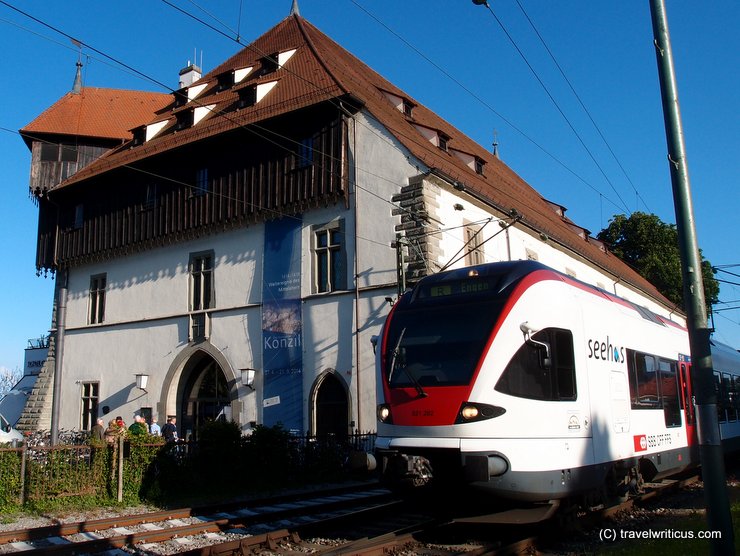
The Seehas Railway is a rail link between Konstanz and Engen. The name doesn’t derive from the existing fish Seehase (lumpsucker) but from a fabulous creature supposed to live in the western part of Lake Constance. [German]
You only see what you know (Goethe)

The Seehas Railway is a rail link between Konstanz and Engen. The name doesn’t derive from the existing fish Seehase (lumpsucker) but from a fabulous creature supposed to live in the western part of Lake Constance. [German]
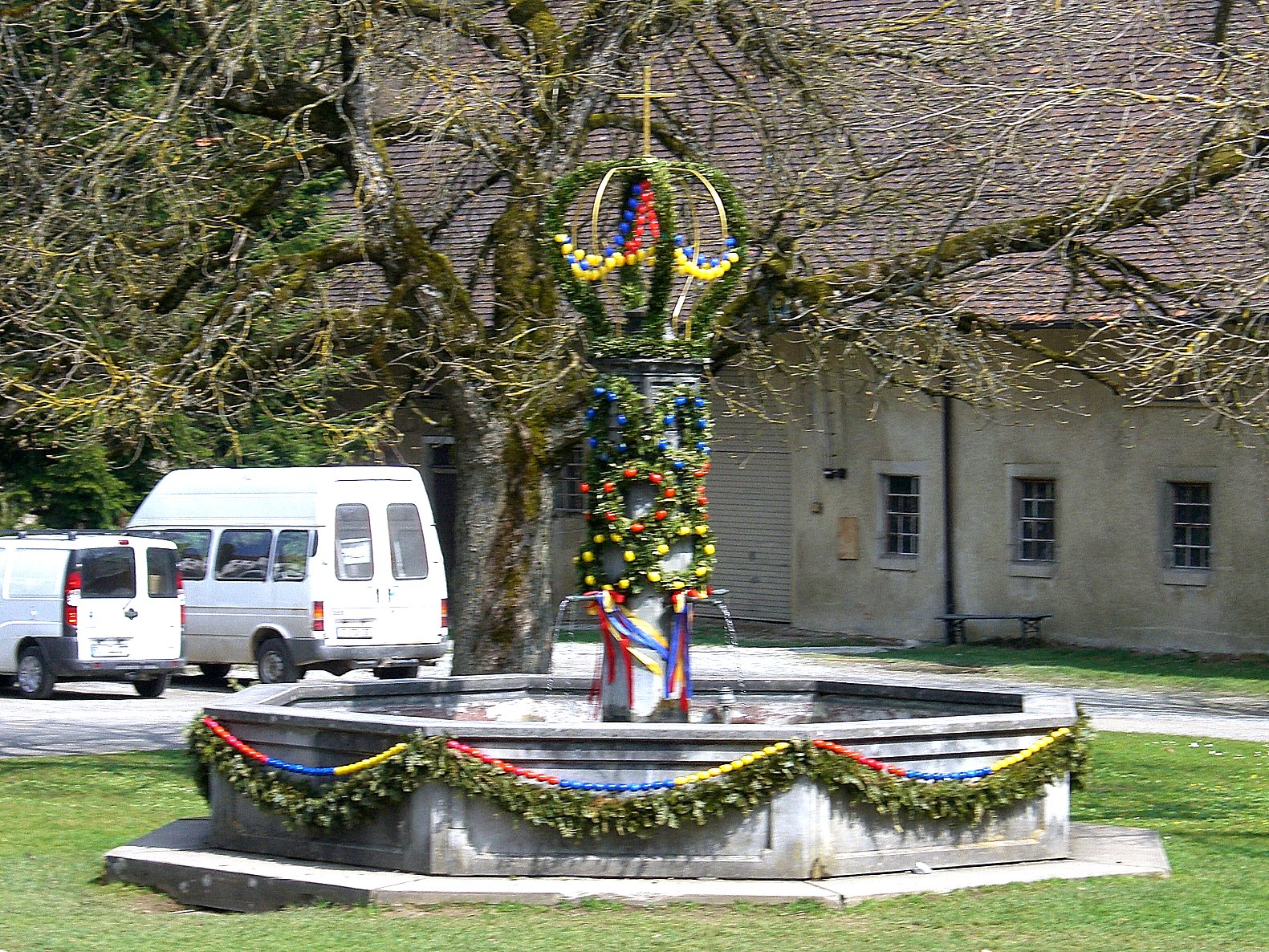
Decorated Easter Wells (Osterbrunnen) are a German tradition dating back to the early 20th century. The first examples developed in Franconian Switzerland (Fränkische Schweiz). In the meantime, more and more Easter Wells and Fountains have arisen in other parts of Germany.
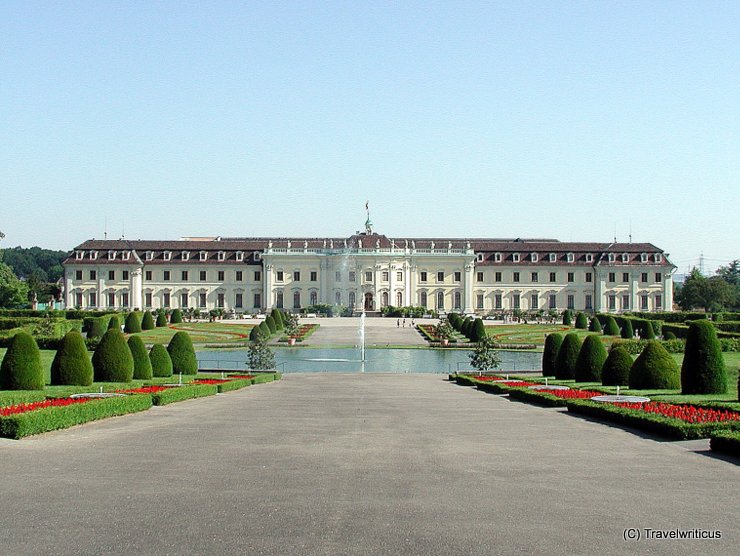
The Residential Palace of Ludwigsburg (Residenzschloss Ludwigsburg) is one of the largest Baroque complexes among the castles of Baden-Württemberg. A park behind the palace shows scenes from well-known children’s fairy tales with elaborate buildings. [German]
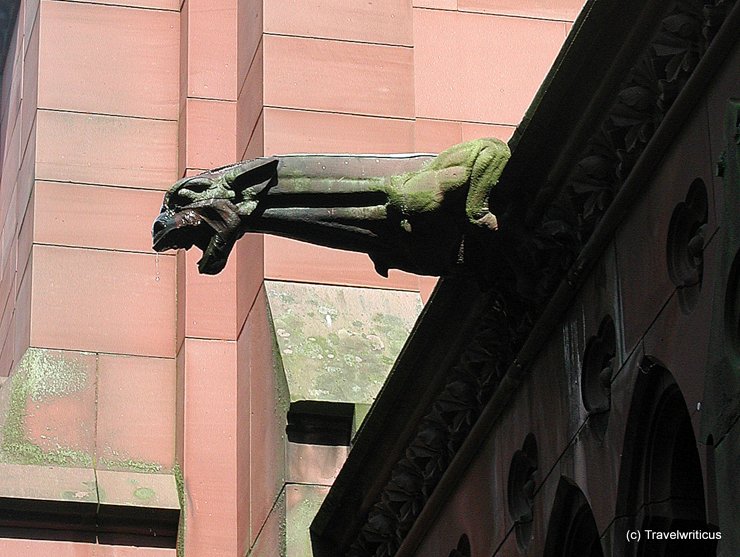
This gargoyle seen at the sepulchral chapel of the Grand Duke of Baden (Großherzogliche Grabkapelle) reminded me of a scene from the movie ‘Alien’.
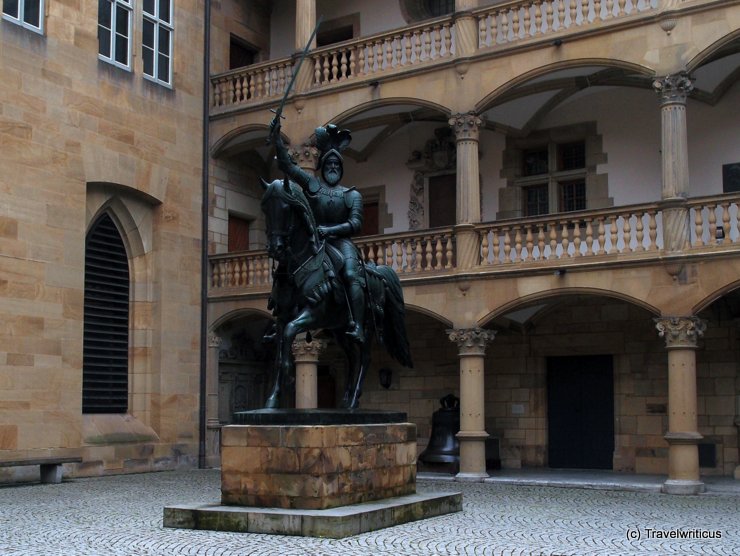
Eberhard I (1445-1496) is considered the first Duke of Württemberg. He is also known as Eberhard im Bart (Eberhard the Bearded). This equestrian statue made of bronze stands in the courtyard of the Altes Schloss (Old Palace) in Stuttgart. Today, the castle serves as the location of the Landesmuseum Württemberg. [German]
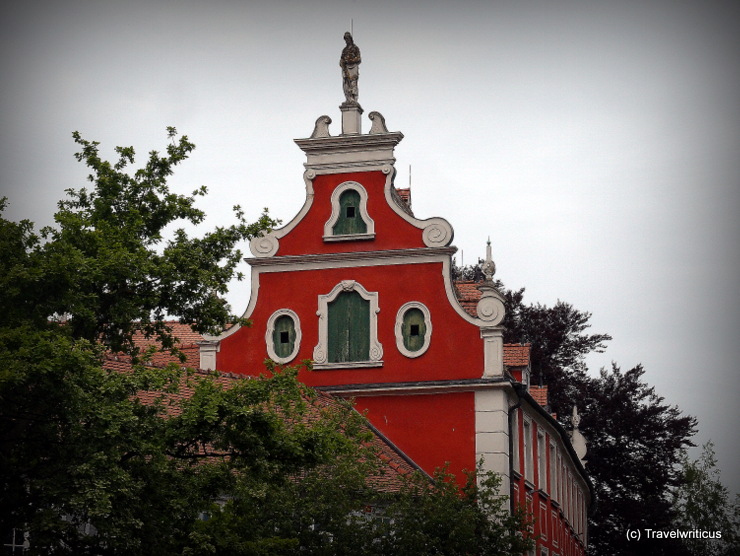
On my way from the Imperia statue to the Rhine Gate Tower (Rheintorturm), I notice a striking red facade. Around 1300 the St. Konrad Hospital was built in this place, which integrated an existing chapel. The hospital later changed into the Dompropstei of Constance. [German]
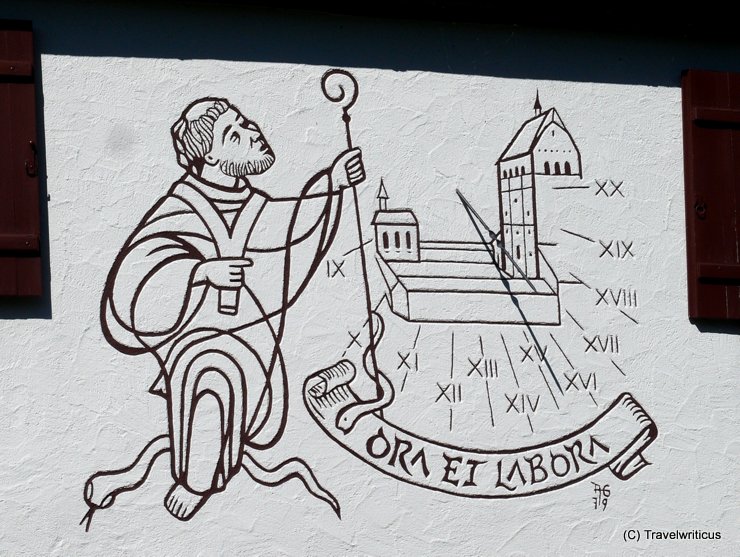
This sundial is located on a wall of Reichenau Abbey on Reichenau Island. It shows not only the motto ‘Pray and Work’ (ora et labora) but also Saint Pirmin, the founder of Reichenau Abbey. The two snakes refer to the fact that he is considered to be a patron against snake bites.
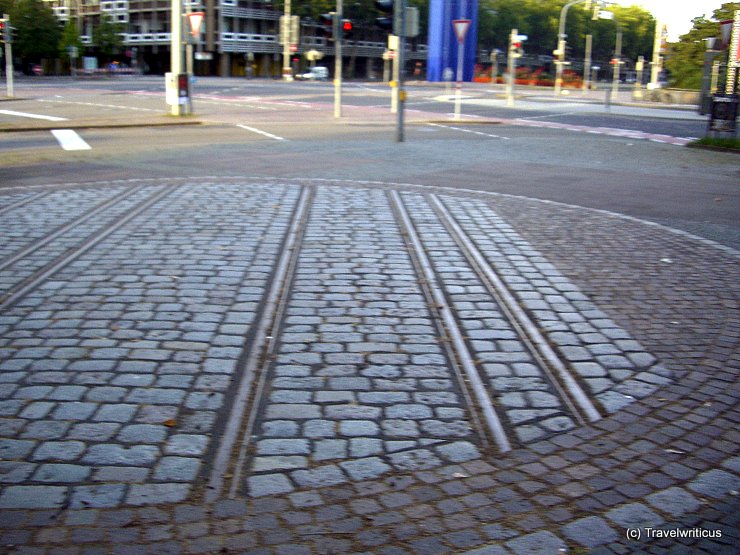
An interesting detail in the streets of Karlsruhe: The remains of a former dual-gauge railway which used three rails.
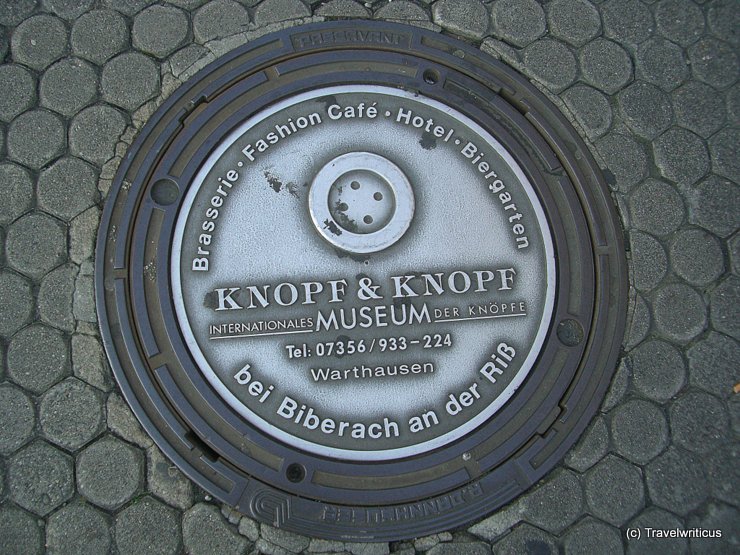
Clever! An International Museum of Buttons (Knopf & Knopf Museum) advertises on this manhole cover. Together with a brasserie and a hotel, it fills a former railway station building in Warthausen. The building is located directly on the Öchsle Railway, a heritage railway from Warthausen to Ochsenhausen. [German]
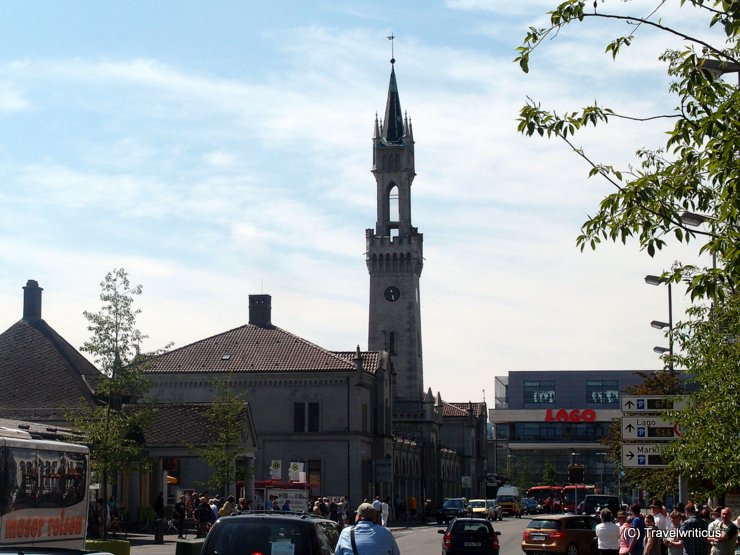
The train station of Constance (Konstanz) was built in 1863. The architecture consists of a mixture of neo-Gothic and Renaissance. The tower is modeled after the Palazzo Vecchio in Florence. [German]
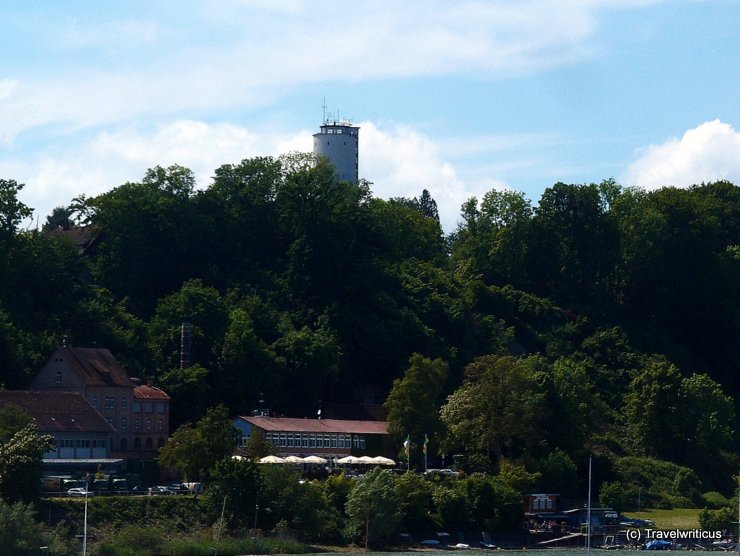
While crossing Lake Constance from Meersburg to Constance by boat I took this photo of a conspicuous white colored tower named Otto-Moericke-Turm. It is a former water tower which houses a youth hostel now. A fine address if one would like to stay at something special.
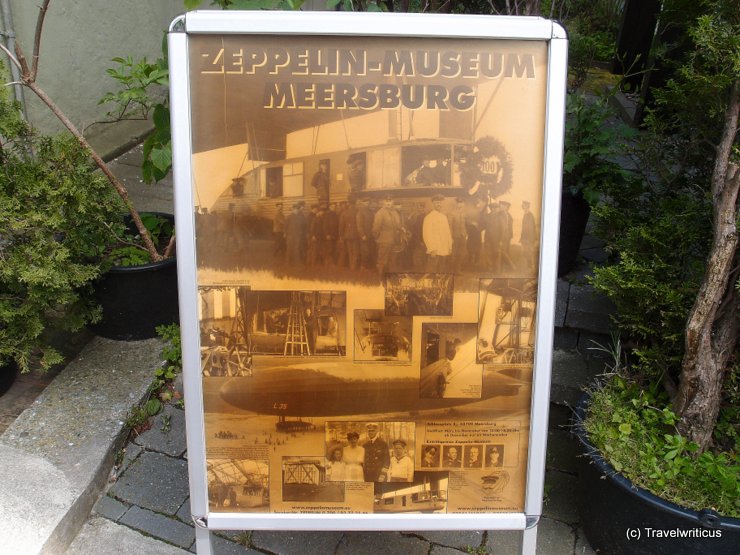
On my way to Meersburg Castle, I came across this Zeppelin museum in Meersburg. If one is interested in this kind of airship, this museum and the Zeppelin museum in Friedrichshafen nearby would be a good combination.